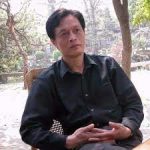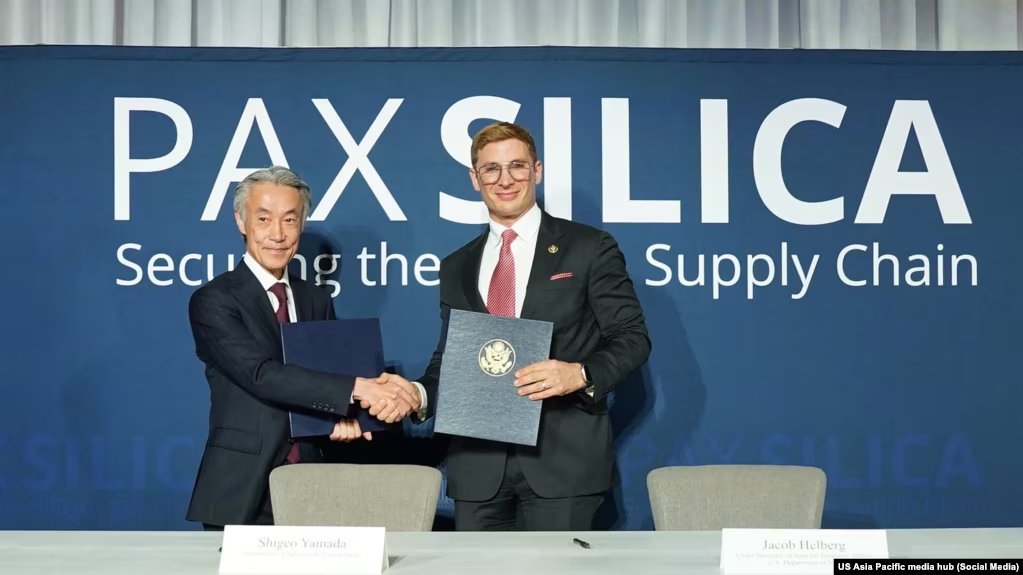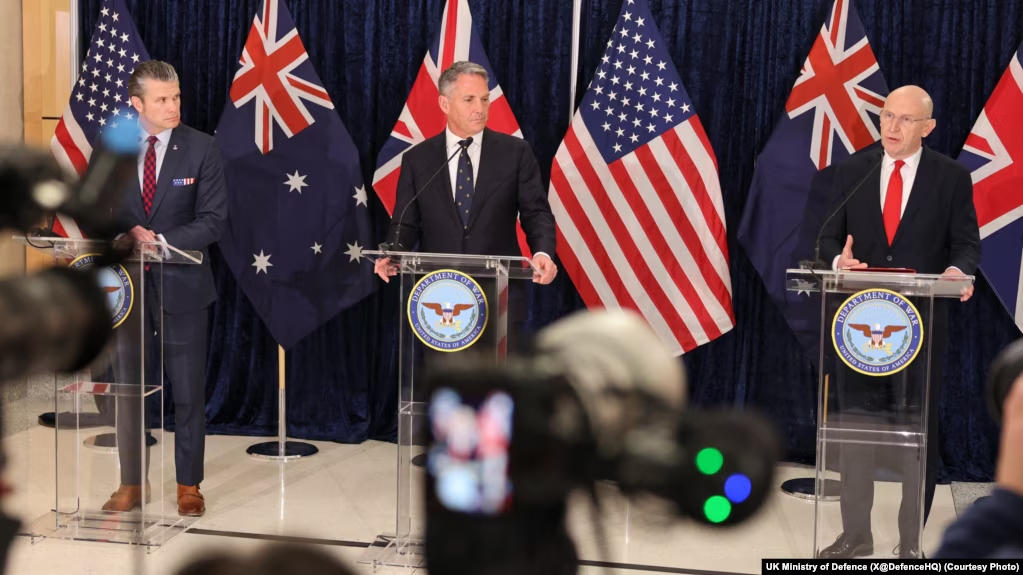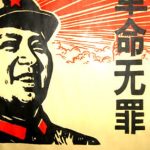April 13, 2017
Tagged: Censorship, China, WeChat, Weibo
Categories: Jeffrey Knockel, Lotus Ruan, Masashi Crete-Nishihata, Reports and Briefings, Research News
Authors: Lotus Ruan, Jeffrey Knockel, and Masashi Crete-Nishihata
Read Citizen Lab Director Ron Deibert’s blog post on the report.
Summary
Beginning in July 2015, over 250 Chinese rights lawyers, law firm staff, activists, and their relatives were detained by public security agents in China. The event was later dubbed the “709 Crackdown” (“709大抓捕”), marking when the first lawyer disappeared on July 9, 2015. In January 2017, an attorney of one of the detained rights lawyers issued transcriptions of a meeting with the detainee, detailing torture during police interrogations. Concerned citizens have taken to WeChat and Sina Weibo, two of the most popular social media platforms in China, to advocate for these lawyers and rights defenders.
This report is a continuation of research documenting content filtering on WeChat and Sina Weibo. Censorship on these platforms is dynamic and often reactive to news events.
Through a series of tests we found content related to the “709 Crackdown” blocked on both platforms. This censorship is implemented in ways that are not transparent to users, a continuation of trends we have seen in past research. Additionally, we provide evidence of images related to the event filtered on WeChat in both chat and WeChat Moments. This finding is the first documentation of image filtering on the app. Similar to keyword filtering, censorship of images, is only enabled for accounts registered to mainland China phone numbers. Our findings serves as a reminder to China-focused NGOs and individuals of the potential hindrances they may face when communicating on Chinese social media platforms.

Explore our visualization
Explore our visualization of censored discussions of rights defenders (optimized for mobile):
https://citizenlab.org/709crackdownviz
A Nationwide Crackdown on Rights Defenders and Civil Society At Large
Nearly 250 human rights lawyers and activists in China have been targeted by police in a nationwide crackdown since July 2015. Law firm staff and relatives of the targeted lawyers and activists are reportedly forbidden to leave the country.
This targeting has been dubbed the “709 Crackdown,” because the first enforced disappearances of lawyers Wang Yu (王宇) and her husband Bao Longjun (包龙军) took place on July 9, 2015. As of February 16, 2017, four lawyers and activists have been convicted, ten formally charged with various offences, and an additional ten have been released pending further investigation or released on bail.
Even before July 2015, China’s rights lawyers and activists suffered periodic crackdowns. The ongoing campaign against rights lawyers and activists is considered the Communist Party of China (CPC)’s latest efforts to curb the Weiquan (“Safeguarding Rights”) Movement and civil society at large. The movement, led by a decentralized group of lawyers, legal experts, and intellectuals who seek to protect and defend the civil rights of the citizenry through litigation and legal activism in China, first emerged in 2000.
The current systematic crackdown extends beyond mainland Chinese citizens to include Hong Kong booksellers, foreign NGOs based in China, and foreign human rights activists. Human rights lawyer Teng Biao remarked that it is “the largest crackdown seen in China’s civil society since 1989.”
The “Anti-China Forces”
The CPC has at times deemed rights groups, especially those advocating for civil and political rights, as elements “subversive” to state power and “anti-China forces” harmful to national security. Any physical and legal punishment applied to these groups and its members are often accompanied by public media campaigns aimed at discrediting these groups and restrictions on relevant online discussions.
In late 2013, Document No. 9, (formally referred to as the Communiqué on the Current State of the Ideological Sphere), was leaked, showcasing the Chinese leadership’s fear of “Western-style” civil society threatening the CPC and their determination to prohibit the promotion of “universal values” of human rights in China.
At the 2017 “Two Sessions”—the annual meetings of China’s top legislature—Zhou Qiang (周强), China’s Chief Justice, and Procurator-General Cao Jianming (曹建明), delivered a work report of the state’s top court and procuratorate (the Chinese office of investigation and prosecution), boasting about the convictions of Zhou Shifeng (周世锋), Hu Shigen (胡石根), and a number of other rights defenders detained in the “709 Crackdown” on charges of “subverting state power” in 2016. Zhou Shifeng is the founder the Beijing Fengrui Law Firm, which frequently defended high profile cases and Hu Shigen is a Chinese advocate for religious freedom. Zhou Qiang and Cao Jianming denounced the idea of judicial independence pledged to help create “a safe and stable social environment” and strike hard on “crimes undermining national security.”
Vocal International Advocates and a Silent Chinese Internet
Since the 709 Crackdown, China-watchers, international human rights organizations, and lawyers in Hong Kong have launched global petitions to advocate for fair trials and the release of detained lawyers and activists, especially after allegations of the mistreatment of Xie Yang (谢阳), Jiang Tianyong (江天勇) and other detained rights lawyers surfaced. Prior to the most recent UN Human Rights Council meeting in March 2017, eleven countries jointly signed a diplomatic letter and called on the Chinese government to investigate reports of torture against human rights lawyers.The 11 signatories are ambassadors and chargés d’affaires from Australia, Canada, Japan and Switzerland, along with seven European Union member countries including Belgium, the Czech Republic, Estonia, France, Germany, Sweden and the United Kingdom. According to Sophie Richardson, China director at Human Rights Watch, the United States had been invited to sign the letter but declined. The signatory countries also urged China to end the practice of “Residential Surveillance at a Designated Place,” a controversial form of detention used by the authorities to hold suspects in sensitive cases for up to six months, often without their families and lawyers knowing their whereabouts. Hua Chunying, a spokesperson for China’s Ministry of Foreign Affairs, said that the letter “violates the spirit of rule of law”.
While the calls for protecting these individuals are mounting in the international community, in China online information on the 709 Crackdown has been restricted.
The majority of the top search results for “709事件” (709 Case) on Baidu, China’s largest search engine, point to an op-ed by Global Times, a state-run newspaper affiliated with the CPC’s official newspaper People’s Daily, ridiculing how public opinion in the West called the 709 Case a “violation of human rights.” Official media has discredited the allegations of torture against rights lawyers as “fake news.”
Chen Guiqiu (陈桂秋), wife of Xie Yang, stated that she was approached by Chinese public security forces and asked “not to contact relatives of other detained lawyers; not to leave the country; not to take interviews from foreign media; not to disseminate information relevant to the 709 case on WeChat or Weibo.” On February 1, 2017, the British Embassy in China posted an EU statement on its official Weibo account (a popular Twitter-like service in China), calling for an investigation of “the account of torture in the case of Xie Yang and the allegations of torture in the cases of Li Heping (李和平) and Wang Quanzhang (王全璋),” as well as “the release of the lawyers and human rights defenders who remain in detention, including Jiang Tianyong.” Figure 1 is a screenshot showing that Weibo users were not able to repost or comment on the post.
Figure 1: Weibo users were not able to forward or comment on a 709 case-related post written by the British Embassy in China as “the content violates either Weibo Community Management Regulations or relevant regulations and policy.”
Rights Defenders Blocked on WeChat
WeChat (Weixin 微信 in Chinese) is one of the most popular chat applications in China and the fourth largest in the world, with 768 million daily active users. It thrives on the huge user base it has amassed in China, but the Chinese market presents unique challenges. Internet companies in China are required to follow laws and regulations on content monitoring. Failure to control and filter unwanted content can lead to fines or revocation of operating licenses.
In previous research, we showed that WeChat enables keyword filtering for users with accounts registered to mainland China phone numbers, and the censorship persists even if these users later link the account to an international number. Keyword censorship is not transparent, no notice is given to a user if their message contains a blocked keyword. The message simply does not appear on the receiver’s end. We also found that more keywords are blocked on group chat, where messages can reach an audience of up to 500 users, than in one-to-one chat.
WeChat performs censorship on the server-side, which means that messages sent over the app pass through a remote server that contains rules for implementing censorship. If the message includes a keyword that has been targeted for blocking, the entire message will not be sent. Documenting censorship on a system with a server-side implementation requires devising a message of one or more words to test, running that message through the app, and recording the results.
WeChat Keyword Filtering
Our previous work found that censorship on WeChat is dynamic and keyword blacklists are updated in reaction to news events. We conducted tests to determine if words related to news events were blocked by collecting front page articles from Chinese-language international and independent news media websites. We copied the text of the article into a chat between an account registered to a mainland China phone number and accounts registered to international phone numbers. If we found the article was censored we then reduced the text in the article down to the minimum number of words required to trigger censorship. If this minimal set of words is in simplified Chinese, then we also test them in traditional Chinese, or vice versa.
As part of our initial test, we collected articles from a sample of international and Chinese news websites, including many labeled as “Must-Read” on Fan Qiang Hou (“After You Jumped Over the Wall”), a website maintained by Chinese activist and blogger Wen Yunchao aimed for Chinese Internet users who are circumventing the “Great Firewall.”
Our initial testing suggested that, among all the news sites in our sample, those that produce mainland China-focused, simplified Chinese-language daily news yielded the most censorship results on WeChat. Therefore, we decided to direct our efforts at collecting news articles from those sites and submit them for testing on WeChat. Table 1 in the Appendix shows a list of news media currently being sampled for our project.
One limitation of this method is that sampling has inherent bias and is not comprehensive. Many of the articles are from international media sources, covering political issues that are considered sensitive to the CPC. Moreover, our results are only as accurate as the intersection between our sample and what WeChat is filtering. Therefore, our sample is skewed toward political issues, and there may be other words filtered by WeChat that are outside of our sample. Despite this caveat, monitoring the same websites on a daily basis offers us a sense of what events or themes are subject to more censorship than others over a certain time period.
Our previous report found that WeChat censors a message if it contains a blacklisted keyword combination. A blacklisted keyword combination is composed of one or more individual keyword components. If a keyword combination is composed of only one keyword component (e.g., “法轮功”), then a message is filtered if that keyword component (“法轮功”) appears anywhere in the message. If a blacklisted keyword combination is composed of more than one keyword component (e.g., “退党+退团+退队”), then censorship is triggered only if every keyword component (“退党”, “退团”, and “退队”) appears somewhere in the message, although not necessarily adjacently.
We found 42 keyword combinations related to China’s crackdown on rights defenders blocked on WeChat in testing from December 1, 2016 to March 27, 2017. The majority (88.1%) of 709 Crackdown-related keyword combinations that we found include at least one keyword component referencing the name of an individual affected by the crackdown. The figure below the Summary section is a visualization of the keyword combinations mentioning one or more individuals. Table 2 shows a breakdown of the non-people related keyword combinations.
Date Tested Keyword Combinations Translation
2016-12-01 台湾+声援+中国人权+律师 Taiwan + Voice Support + China Human Rights + Lawyer
2017-01-24 Defenders + China + Human + Rights + arrest N/A
2017-01-24 失踪+中国维权律师关注组 Missing + China Human Rights Lawyer Concern Group
2017-02-03 709大抓捕+人权捍卫者+剥夺会见权 709 Mass Arrest + Human Rights Defender + Deprived of Right to Meet
2017-02-04 709+大抓捕+指定居所监视 709 + Mass Arrest + Residential Surveillance at Designated Place
Table 2: A sample of keyword combinations that found blocked on WeChat.
All of these keyword combinations are blocked only in group chat with the exception of one keyword combination “台湾+声援+中国人权+律师” (Taiwan + Voice Support + China Human Rights + Lawyer) which is blocked in both group chat and one-to-one chat. That keyword combination is likely referring to the Taiwan Support China Human Rights Lawyers Network (台湾声援中国人权律师网络), a Taiwan-based NGO that publicly condemned the disappearance of Jiang Tianyong.
The majority of the blacklisted keyword combinations that we found were in Chinese with the exception of one keyword combination in English (“China+Arrest+Human Rights+Defenders”). Figure 2 shows a group chat conversation between a user registered to a mainland China phone number and accounts registered to international phone numbers. If the China user sends messages with a keyword combination’s components individually, the message can be received by other users, but if the four components are sent together in a sentence by the China account, then other users will not receive the message.
Figure 2. A user registered to a mainland China phone number attempts to send a message with the keyword combination “China+Arrest+Human Rights+Defenders” in a group chat to international users and the message is blocked. If that keyword combination’s components are sent individually, then they are received.
In Chinese language, we found 41 blocked keyword combinations including “709+江天勇+维权律师” (709 + Jiang Tianyong + rights Lawyer). Figure 3 shows that keyword components can be sent individually, but are blocked if they are sent in a single message. In our example, the sentence “江天勇是一名维权律师,他受709事件事件影响。” was blocked in group chat.
Figure 3. A user with a China account attempts to send a sentence containing the keyword combination “江天勇+维权律师+709” in a group chat to international users and is blocked. If the keyword components are sent individually they are received.
Additional “709 Crackdown” Keyword Testing
Among the 42 censored keyword combinations we discovered from our initial round of WeChat testing were the names of 12 individuals affected by the 709 Crackdown. The case itself, however, has so far involved at least 248 lawyers and activists. In attempt to determine the extent of blocked content related to the 709 Crackdown on WeChat, we ran a second type of testing. We wanted to determine if we could use our existing set of keyword combinations already found blocked on WeChat group chat to find keyword combinations targeting any of the other remaining 236 known individuals in the 709 Crackdown. We obtained the list of names and nicknames of the 248 targeted individuals from the latest available data compiled by Amnesty International.<
To do this, we generated test messages as follows. We first constructed the set of all keyword components we had previously found censored on WeChat, including those unrelated to the 709 Crackdown (initially, this consisted of 1,474 unique components from 741 different keyword combinations) and then added to this set the names of any of the 248 rights defenders who were not already in it. Since a message containing all of these words would necessarily be filtered, we remove components from this set until it is a set of components that will only trigger censorship if our list of censored keyword combinations is incomplete.
Namely, in random order, for each keyword combination we know is censored on WeChat, if all of its keyword components are still in the set of words, we remove one of its components at random from the set. (If a keyword combination is an individual keyword, i.e., has only one component, then its component is always removed if it is still in the set.) Thus, at the end of this process, if our list of censored keyword combinations is exhaustive, then a message containing the set of remaining components will never trigger censorship. Moreover, if it does trigger censorship, then we will necessarily find at least one new censored keyword combination in that message.
During the period of March 27 to April 4, 2017, we tested messages randomly generated according to this algorithm until ten messages in a row were not censored. This method produced only two new keyword combinations related to the 709 Crackdown: “梁小军+刘晓波+煽动颠覆” (Liang Xiaojun + Liu Xiaobo + Incite Subversion) and “批评政府+梁小军+权平” (Criticize Government + Liang Xiaojun + Kwon Pyong), and only one new rights defender, 梁小军 (Liang Xiaojun).
Since this method produced only one new rights defender, this result could mean that certain individuals affected in the 709 Crackdown are considered “more sensitive” and are subject to greater censorship to avoid public discussions. However, this result could also be due to our limited monitoring sample and that we may have missed news articles covering other affected individuals and/or individuals who were not popularly covered by news articles. Future research should further explore event-based censorship by collecting and testing as many articles on the same event as possible to generate a less biased sample and investigate additional methods of discovering censored keyword combinations that do not rely on sampling from news articles. The comprehensive list of keyword combinations that we have found censored on WeChat as of this report is available here, including those found by sampling news articles and by using the technique described in this section. This list also includes keyword combinations unrelated to the 709 Crackdown event.
WeChat Image Filtering
In addition to blocking of keyword combinations related to crackdowns on rights defenders, we also found that WeChat filters images related to the event. Examples of blocked images include the cover of China Human Rights Lawyers Concern Group’s “Report on 709 Mass Arrest,” an infographic explaining the “709 Storm,” an open letter from defenders and their relatives, profiles of convicted lawyers and activists, the twenty six rights defenders on bail while awaiting trial, and fifteen other arrest cases.
Image censorship occurs in both WeChat’s chat function and WeChat Moments (朋友圈), a feature that resembles Facebook’s Timeline where users can share text-based updates, upload images, and share short videos or articles with their friends. Moments can be seen as having a higher level of intimacy and privacy than other social media products like Weibo or Facebook posts, because a user’s updates on Moments can only be seen by friends verified or selected by the user, and a user can only see interactions of people already on his/her WeChat contact list.
In September 2016, Chinese authorities issued new regulations, stating explicitly that messages and comments on social media products like WeChat Moments can be collected and used as “electronic data” to investigate legal cases. Recent cases of WeChat users arrested for “insulting police” or “threatening to blow up a government building” on Moments indicates that the feature may be subject to monitoring by the authorities or the company.
On January 30, 2017, we discovered that a number of images related to the 709 Crackdown are blocked in group chat when using an account registered to a mainland China phone number. The censorship was first noticed when we were performing our usual keyword testing of news articles. When we copied and pasted the image accompanying certain news articles about the 709 Crackdown, the image itself was filtered.
Figure 4. Evidence of censorship of image in WeChat’s group chat feature. A user with a China account attempts to send a picture of the cover of a report on the 709 Crackdown published by China Human Rights Lawyers Concern Group 中国维权律师关注组 and is blocked.
Figure 5. Evidence of implicit censorship of image in WeChat Moments. A user with a China account (on the left) attempts to send an image related to the 709 Crackdown and is hidden from other China account’s Moments feed (on the right). The image is visible in the user’s own feed as well as to an international account (in the middle).
To get a sense of the extent of image censorship related to the crackdown on WeChat, we used the term “709大追捕” (709 Crackdown) in Google Image Search and identified 575 relevant images between March 18 and 21, 2017. We went on to upload the images to group chat and to Moments for testing. Around ten percent of our sample (58 out of 575) triggered censorship on Moments, most of which are infographics related to the 709 Crackdown, profile sketches of the affected lawyers and their relatives, or images of people holding the slogan “Oppose Torture. Pay attention to Xie Yang” (“反对酷刑,关注谢阳”). All of the images we found censored WeChat Moments are available here.
Our tests showed that an image on Moments is filtered according to that image’s content in a way that is robust to some modifications to the image. More work is needed to determine what kinds of modifications can be made to an image while having it still be censored by the WeChat image filter and to identify the kind of algorithm WeChat is using to detect filtered images in general.
Similar to keyword filtering, censorship of images is only enabled for users with accounts registered to mainland China phone numbers. The filtering is also not transparent. No notice is given to a user if the picture they sent is blocked. Censorship of an image is concealed from the user who posted the censored image. A user in China is able to successfully post a censored image, and the image is visible to international users on that user’s contact list, but the post is hidden from the Moments feed for users in China. We only found images blocked in group chat and Moments. The greater attention to group chat and Moments in particular may be due to the semi-public nature of the two features. Messages can reach and inspire discussions among wider audiences, making it subject to a higher level of scrutiny.
Tracking Censorship of Rights Defenders on Weibo
A previous Citizen Lab report by Jason Q. Ng shows that Sina Weibo, a Chinese Twitter-like service, implements filtering on its search engine. When search results are filtered users are presented with one of two messages. A user may see a message that explicitly explains the content has been blocked or a more ambiguous error message.
“根据相关法律法规和政策,搜索结果未予显示” (“According to relevant laws, regulations, and policies, search results cannot be displayed”)
“抱歉,未找到相关结果” (“Sorry, no relevant results found.”)
To test whether Weibo has been censoring content related to the “709 Crackdown,” we submitted the keyword combinations that we found blocked on WeChat through Weibo Search on January 30-31, 2017. We found that unlike WeChat, Weibo consistently censors both simplified Chinese-language and traditional Chinese-language versions of each of its censored keyword combinations, but that like WeChat, Weibo search also uses keyword combinations to trigger censorship.
Both user messages were returned for the keyword combinations we tested. The criteria for whether a keyword combination triggers the explicit message or the less transparent message are not clear. The removal of any acknowledgment of filtering during searches often makes censorship more difficult to recognize.
Figure 6: Evidence of explicit censorship on Sina Weibo search, notifying users that “According to relevant laws, regulations, and policies, search results of 高智晟 (Gao Zhisheng) cannot be displayed.”
Figure 7: Implicit content filtering on Sina Weibo search that reads, “Sorry, unable to find results related to 谢阳 (Xie Yang) + 指定监视居住 (Residential Surveillance at Designated Place).”
Since Weibo consistently filters both simplified and traditional Chinese, we included only simplified Chinese-language and English-language keyword combinations in our testing. The initial test shows that twenty six out of the twenty nine keyword combinations from WeChat also triggered censorship on the Weibo search engine.
We determined the keyword combinations that triggered censorship on Weibo search using the following process:
We removed characters from each WeChat keyword combination until no more characters could be removed while still triggering censorship.
We then split the keyword combination into as many separate components as possible while still triggering censorship.
In the first step, we removed characters until we found the smallest keyword censored and then backtracked by adding them back so as to find all possible Weibo search keyword combinations that a WeChat combination might be reduced to (e.g., “大抓捕+深圳+邓剑峰+监视居住” from the WeChat list can reduce to “深圳+大抓捕+邓” and “圳+邓剑+监” to trigger filtering on Weibo search).
The keyword combinations we found blocked on WeChat are often a combination of multiple individual components that trigger censorship in a sent message only if each individual component in the combination appears somewhere in that message. Thus, after we find the minimal number of characters triggering censorship, we then divide it into as many words as possible while having it still trigger censorship. We do this by adding dummy English letters in between each character. If after inserting a dummy letter the string of characters is still censored, then we know that we can split the keyword combination into separate words at the place of that dummy letter (e.g., if “看望遭羁押x江天勇” triggers censorship, then we know that “看望遭羁押+江天勇” in combination trigger censorship).
As a result of this methodology, each of the keyword combinations we found censored on Weibo search are comprised of components from a keyword combination that we had already found censored on WeChat, possibly with some characters removed.
We found sixty keyword combinations blocked on Weibo Search. Four of those keyword combinations triggered explicit filtering: “高智晟” (Gao Zhisheng, a Chinese human rights attorney and dissident known for defending activists and religious minorities and documenting human rights abuses in China); “失联+曾飞洋” (Lost Contact + Zeng Feiyang, likely referring to the case of Zeng Feiyang, founder of a Guangzhou-based NGO for workers who was convicted of “assembling a crowd to disturb social order”); “曾飞洋+劳工” (Zeng Feiyang + Labour); and “中共暴政” (CCP Tyrannical Rule, a generic criticism of the Party). The remaining keyword combinations trigger the message: “Sorry, unable to find related results.” Table 3 in the Appendix section shows a breakdown of the sixty simplified-Chinese keyword combinations.
Conclusion
Our report reviews the crackdown on Chinese rights lawyers and activists, particularly since July 2015, and provides technical evidence of how circulation of information regarding this crackdown is highly sanitized. The online discussion of the 709 Crackdown and the community of rights defenders are subject to many restrictions.
This research also highlights the challenges faced by individuals, NGOs, and the international community in conducting advocacy work related to the “709 Crackdown” as well as many other politically sensitive cases in China. While there is tremendous effort and numerous global petitions to help Chinese rights defenders, many of these messages fail to reach domestic audiences in China due to information control practices, including search filtering and keyword and image censorship on chat apps.
In the meantime, as major global social media channels (e.g., Facebook, Twitter, Pinterest, LINE, and Telegram) are blocked in China, many overseas individuals, NGOs, and media rely on WeChat and Weibo to communicate with their China-based partners and audiences. This report serves as a reminder that the transmission of those messages—even through private chat apps—are not always reliable.
Chinese social media platforms routinely and systematically enforce information controls on politically sensitive content. The blocking of the 709 Crackdown-related keyword combinations showcases that censorship on Chinese social media such as WeChat and Weibo is dynamic and reactive to current events. The keyword blacklists are often updated in response to the development of the events.
Previous work has found similar information control mechanisms on Chinese video sharing sites, live streaming apps, and chat apps. Our discovery of related blocked images on WeChat confirms the existence of image filtering and reveals the high level and extent of censorship enforced on this popular chat app.
Limitations and Future Work
This report is part of our ongoing study of WeChat censorship. The list of “709 Crackdown”-related censored keyword combinations we documented in this current report is unlikely to be comprehensive. The names of the organizations and the thirteen individuals we were able to identify as censored on WeChat and Weibo are not necessarily the only targets subject to censorship in China’s online or offline spheres. However, our work highlights the restrictions that the community of rights defenders are facing online and offline in China.
Our project documenting and investigating censorship on Chinese chat apps is continually developing. The discovery of image filtering on WeChat provides us with another direction to move forward with in our research. This report provides some experimental methods to track censorship on closed platforms such as WeChat in the increasingly obscure research environment in China. Future research should consider expanding the monitoring list beyond news media.
Acknowledgments
Data visualization by Andrew Hilts. We are sincerely grateful to Professor Ron Deibert, Sarah McKune, Jason Q. Ng, Adam Senft and Irene Poetranto for supervision, research assistance and insightful reviews.
Appendix
Table 1: List of News Sources Currently Monitored for our WeChat Project
Name Note
The New York Times Chinese The New York Times is an American daily newspaper. Its Chinese site has been blocked since 2012 when it published an article on the wealth of former Chinese Premier Wen Jiabao’s family.
Financial Times Chinese The Financial Times, published and owned by Nikkei Inc. in Tokyo, is an international daily newspaper. Its Chinese website focuses on business and financial news in mainland China, with occasional reporting and commentaries on Chinese politics and foreign policy. The website is currently accessible in China.
Radio France Internationale Chinese Radio France Internationale is a French public radio service that broadcasts in Paris and all over the world. Its Chinese-language radio service first started in June 1989. RFI’s websites are blocked in China.
Lianhe Zaobao Lianhe Zaobao (联合早报) is the largest Singapore-based Chinese-language newspaper. The paper establishes itself as a serious broadsheet with extensive local news coverage while international news tend to be largely centered on the East Asia region, especially China. The site is currently blocked in China.
Radio Free Asia Mandarin Radio Free Asia (自由亚洲电台) is a privately funded, international broadcasting corporation that broadcasts and publishes online news to listeners in East Asia while “advancing the goals of U.S. foreign policy.” Its Chinese website focuses on politics and dissident news in China. RFA is blocked in China.
Deutsche Welle Chinese Deutsche Welle is Germany’s public international broadcaster. Its Chinese website, which focuses primarily on mainland China and Europe-China news, is currently blocked in China.
Voice of America Chinese Voice of America is a United States government-funded multimedia news source. Its Chinese website primarily focuses on mainland China news. The website is blocked in China.
Voice of Tibet Voice of Tibet is an India-based independent radio station transmitting shortwave radio programmes and publishing news articles in the Tibetan language as well as Mandarin Chinese. Its stated goal is to “provide news on Tibetan life, culture, events, and issues both inside Tibet and in the global Tibetan exile community” and to “report on democracy movements in China.”
The Initium Media Launched in 2015, the Initium Media (端传媒) is a rising Hong Kong–based digital media outlet that provides news to Chinese-language readers worldwide. By April 2016, it had 2 million monthly unique visitors.
BBC Chinese The British Broadcasting Corporation (BBC) is a British public service broadcaster. Its Chinese website translates or provides original BBC reporting on China issues. The website is currently blocked in China.
Table 3: The 709 Crackdown- and rights defenders-related keyword combinations found blocked on Weibo Search.
Keyword Translation
江天勇+70+维 Jiang Tianyong + 70 + Defend
深圳+大抓捕+邓 Shenzhen + Mass Arrest + Deng
人权律师+天勇+抓 Human Rights Lawyer + Tianyong + Arrest
笔录+中国酷刑+谢阳 Statement + China Torture + Xie Yang
709+春富 709 + Chunfu
高智晟 Gao Zhisheng
谢阳刑 Xie Yang Torture
谢阳+被抓捕 Xie Yang + Arrested
谢阳+指定监视居住 Xie Yang + Residential Surveillance at Designated Place
精神自由+谢阳无罪 Spiritual Freedom + Xie Yang Innocent
江天勇+70+权 Jiang Tianyong + 70 + Rights
圳+邓剑+监 Zhen + Deng Jian + Surveil
人权律师+秘密抓捕 Human Rights Lawyer + Arrest in Secrecy
709+分裂 709 + Split
维权律师关注+刑程度 Rights Lawyers Follow + Degree of Torture
谢阳+告后援 Xie Yang + Lawsuit Backup
陈建+审 Chen Jian + Interrogate
谢阳+审讯 Xie Yang + Interrogate
文化大革+谢阳无罪 Cultural Revolution + Xie Yang Innocent
709+权律师 709 + Rights Lawyer
剑峰+监视居 Jianfeng + Live under Surveillance
供+控告后援 Confess + Lawsuit Backup
监视居住+轮班审讯 Live under Surveillance + Take Shifts to Interrogate
大抓捕+谢 Mass Arrest + Xie
石根+大抓捕+秘密审判 Shigen + Mass Arrest + Secret Interrogation
709+人权 709 + Human Rights
抓捕+剥夺会见 Arrest + Deprived of Rights to Meet
失联+曾飞洋 Lost Contact + Zeng Feiyang
失联+飞洋 Lost Contact + Feiyang
联+曾飞洋 Contact + Zeng Feiyang
失+曾飞洋 Lost + Zeng Feiyang
曾飞洋+劳工 Zeng Feiyang + Labour
70+指定居所监视 70 + Residential Confinement at Designated Place
王全璋的妻+属的打压 Wife of Wang Quanzhang + Suppress Relatives
王全璋妻子 Wife of Wang Quanzhang
有的构陷+江 Framing + Jiang
构陷+天勇 Frame + Tianyong
构陷+江天 Frame + Jiangtian
有的构陷+报复 Framing + Revenge
天勇+报复 Tianyong + Revenge
天勇+打压 Tianyong + Suppress
天勇+中国当局 Tianyong + Chinese Authorities
天勇+有些顾忌 Tianyong + Some concerns
看望遭羁+起诉公安部 Visit Detained + Sue Ministry of Public Security
看望遭羁押+诉公安部 Visit Detained + Sue Ministry of Public Security
诉公+江天勇 Sue Public + Jiang Tianyong
文足+消除影 Wenzu + Eliminate effects
足+除影响 Wenzu + Remove effects
文足+消影响 Wenzu + Remove influences
文足+颜色革 Wenzu + Colour Revolution
文足+色革命 Wenzu + Colour Revolution
文足+颜革命 Wenzu + Colour Revolution
中共+70+抓捕 CCP + 70 + Arrest
中共+大抓捕 CCP + Mass Arrest
峭+709 Qiao + 709
王岭+70 Wang Ling + 70
王岭+大抓捕 Wang Ling + Mass Arrest
王+709抓捕 Wang + Mass Arrest
中共暴政 CCP Tyrannical Rule
中共+荊陵 CCP + Jingling









